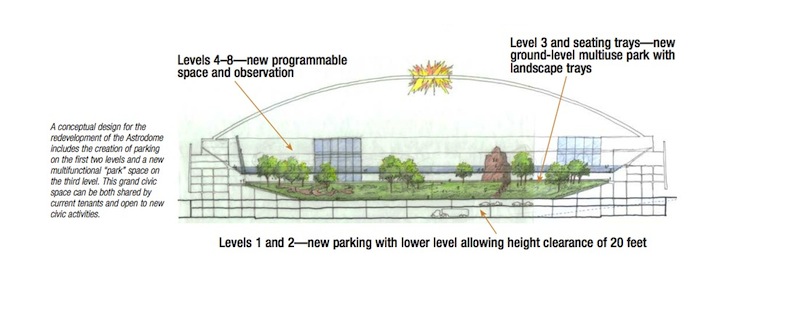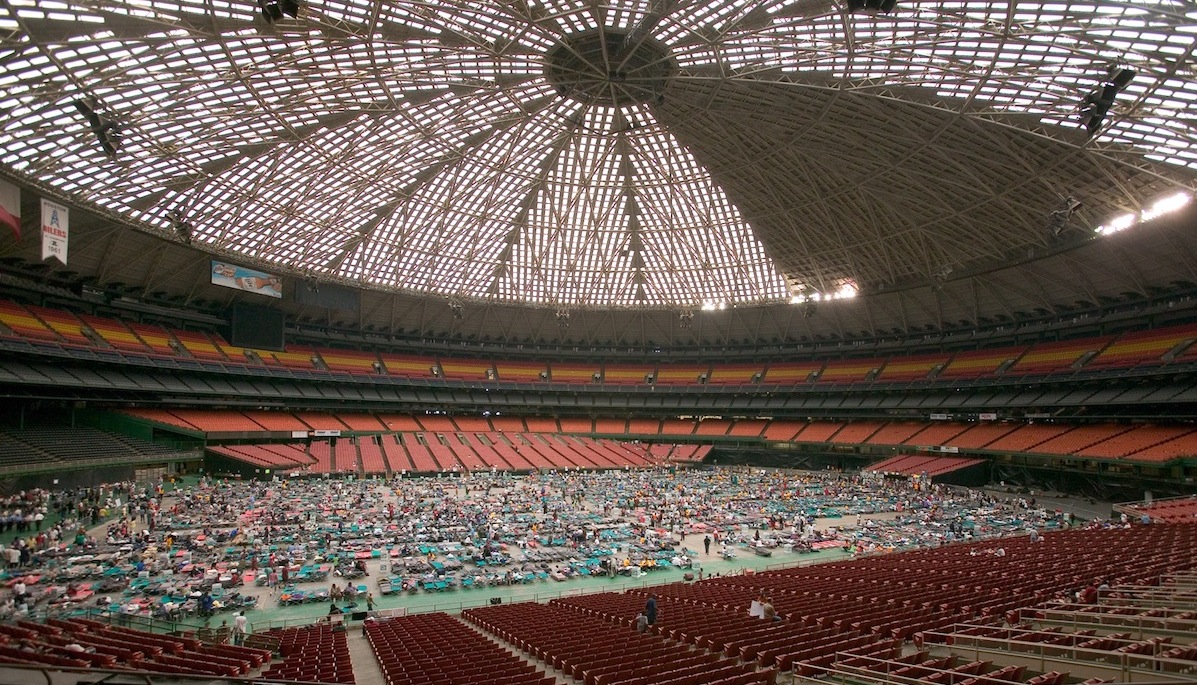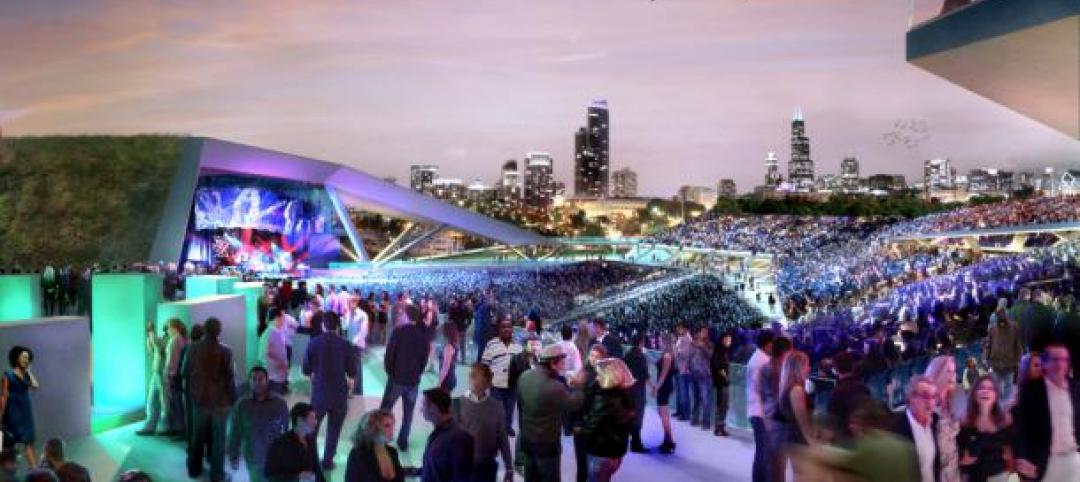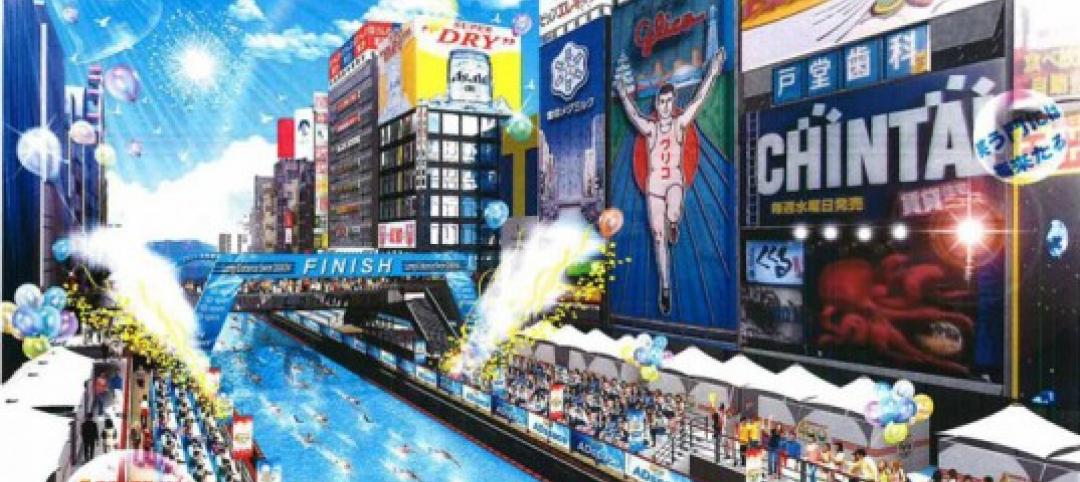An advisory panel of developers, architects, business leaders, and other land-use experts has proposed turning Houston’s decrepit Astrodome, which has been vacant since 2008, into a multipurpose park and civic, programmable space for festivals, concerts, and exhibits.
This is the latest in a series of proposals that, over the past few years, have been floated and, to this point, rejected. They have included converting the Astrodome into a luxury hotel and a movie studio.
In November 2013, voters turned down a $213 million referendum to renovate the building into a convention center and exhibition space. A month later, the Astrodome’s three exterior pedestrian ramp towers were torn down. The National Trust for Historic Preservation has listed the Astrodome among the 11 most endangered historic places.
But the city’s council has rejected the Astrodome’s outright demolition until its final disposition is determined, and because the council fears razing a structure this large could cause damage to the surrounding development.
Houston's city council has rejected the Astrodome’s outright demolition until its final disposition is determined, and because the council fears razing a structure this large could cause damage to the surrounding development.
The one-million-sf, spaceship-shaped building was the world’s first multipurpose domed sports stadium. It is now called NRG Astrodome, and is part of the 350-acre NRG Park complex in Harris County, Texas, which includes a stadium with a retractable roof where the National Football League’s Houston Texans franchise plays, and an arena wherre the popular Houston Livestock Show and Rodeo is held. NRG Park is also near Texas Medical Center, the world’s largest.
Last December, the county and the National Trust for Historic Preservation turned to Urban Land Institute to provide strategic advice. (Harris County’s Sports and Convention Corporation had chimed in, too, suggesting the space be used as a public park.) ULI sent a 10-person Advisory Services Panel, chaired by Los Angeles developer Wayne Ratkovich, to visit the Astrodome for three days. That panel came up with a series of recommendations, which ULI released on March 24.
The panel acknowledges that the Astrodome was now “a shadow of its former self.” But it also refers to the building as an “icon,” whose place in history should be part of any renovation plan. A “new vision” for the stadium, the panel states, could include a museum or educational exhibits that focus on science, technology, engineering, the arts, and math.
The panel’s report lays out a detailed renovation strategy:
• 1,500 parking spaces would be added to the 26,000 slots that already surround the building. That parking would be located in the building’s Levels 1 and 2, with the lower level having 20-foot-high clearance.
• Level 3, which currently consists of vast open space and seating trays, would be converted into a new ground-floor multi-use space that, ULI suggests, could include a public park.
• Levels 4 through 8 would be converted to new programmable areas, such as exhibits “to extend the game-day experience for the Houston Texas, new spaces for [the rodeo] and added space for the Offshore Technology Conference. (One of the key goals of ULI’s plan is to lure the rodeo event back into the Astrodome. The rodeo relocated in 2003.) These programmable spaces could also be used for community festivals, farmers markets, movie nights, charity events and other functions that might also provide new revenue streams.
The panel envisions 450,000 sf of leasable space within the Astrodome’s perimeter, which could accommodate restaurants, retail, and other tenants.
Other recommendations include a complete rehab of the building’s dome, and the creation of new outdoor public space or a live oak allée as a promenade between the light-rail station and the Astrodome’s east entrance. Along that allée there would be permanent outdoor pavilions. The building’s outside area would be upgraded with hardscape and landscape features.

The construction cost for this project, estimates the panel, would be around $242.45 million. (The Astrodome opened in 1965 at a cost of $35 million in taxpayer money.) The panel recommends that new capital streams to pay for this construction would need to be explored, including federal, state, county, and city funds; tax increment reinvestment zones; historic tax credits; Harris County redevelopment; and philanthropy.
To get all moving forward, the panel says the county should assign a project “czar,” as well as identify and empower an NRG Park “champion,” perhaps from the ranks of business or not-for-profit organizations.
Independent marketing and design consultants would need to be hired, and after a plan is conceived, it should be submitted to public scrutiny, says the panel.
The goal would be to complete this plan and break ground on the renovation before the 2017 Super Bowl, so that it could be advertised during the event. The panel expects the renovation to take a year or two to complete, and foresees “future public/private project opportunities”—including hotel, mixed-use, and retail development—in the years 2020-2025.
In its report, the panel says Harris County and its residents are at “an intersection of a series of choices: to act rather than procrastinate, to demand quality rather than settle on mediocrity, to create a common interest rather than simply protect self interests, [and] to [either] protect the status quo or reach for the future.”
Related Stories
| Jul 2, 2013
LEED v4 gets green light, will launch this fall
The U.S. Green Building Council membership has voted to adopt LEED v4, the next update to the world’s premier green building rating system.
| Jul 1, 2013
Report: Global construction market to reach $15 trillion by 2025
A new report released today forecasts the volume of construction output will grow by more than 70% to $15 trillion worldwide by 2025.
| Jun 28, 2013
Building owners cite BIM/VDC as 'most exciting trend' in facilities management, says Mortenson report
A recent survey of more than 60 building owners and facility management professionals by Mortenson Construction shows that BIM/VDC is top of mind among owner professionals.
| Jun 13, 2013
7 great places that represent excellence in environmental design
An adaptive reuse to create LEED Platinum offices, a park that honors veterans, and a grand national plaza are among the seven projects named winners of the 2013 Great Places Awards. The Environmental Design and Research Association recognize professional and scholarly excellence in environmental design, with special attention paid to the relationship between physical form and human activity or experience.
| Jun 5, 2013
USGBC: Free LEED certification for projects in new markets
In an effort to accelerate sustainable development around the world, the U.S. Green Building Council is offering free LEED certification to the first projects to certify in the 112 countries where LEED has yet to take root.
| Jun 3, 2013
Construction spending inches upward in April
The U.S. Census Bureau of the Department of Commerce announced today that construction spending during April 2013 was estimated at a seasonally adjusted annual rate of $860.8 billion, 0.4 percent above the revised March estimate of $857.7 billion.
| May 31, 2013
Japan to transform canal into world's largest outdoor pool
A wild proposal by the city of Osaka, Japan, would transform the Dotonbori Canal into a 2,625-foot-long, 40-foot-wide pool.
| May 21, 2013
RSMeans cost comparisons: pools, racquetball courts, bowling alleys, hockey/soccer facilities
Construction market analysts from RSMeans offer construction costs per square foot for four building types across 25 metro markets.
| May 20, 2013
Jones Lang LaSalle: All U.S. real estate sectors to post gains in 2013—even retail
With healthier job growth numbers and construction volumes at near-historic lows, real estate experts at Jones Lang LaSalle see a rosy year for U.S. commercial construction.
| May 17, 2013
First look: HKS' multipurpose stadium for Minnesota Vikings
The Minnesota Sports Facilities Authority (MSFA), the Minnesota Vikings and HKS Sports & Entertainment Group have unveiled the design of the State’s new multi? purpose stadium in Minneapolis, a major milestone in getting the $975 million stadium built on time and on budget.
















